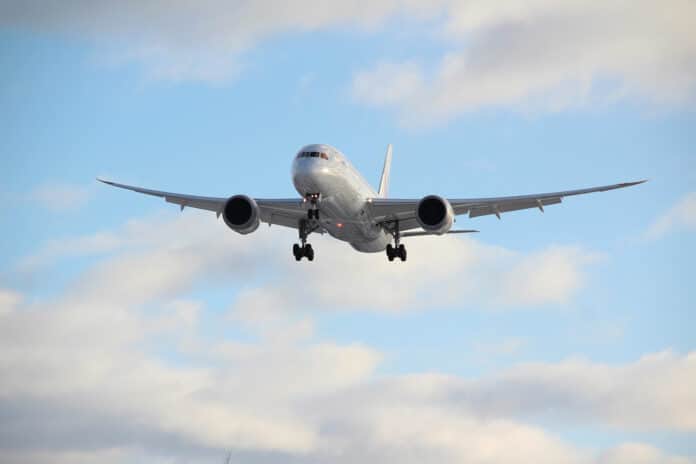Sustainable aviation fuel (SAF) plays an important role in the development of fossil-free aviation fuels and further reduces aviation CO2 emissions. While electric aviation may offer another solution, especially for short flights, the batteries may not be powerful enough for long flights. One emerging way to produce sustainable aviation fuel could be hydrocarbons produced by photosynthetic microorganisms.
A new study by researchers from the Department of Chemistry – Ångström Laboratory at Uppsala University shows that isoprene could be part of a future solution. Isoprene can be produced by blue-green algae from sunlight, water, and ordinary carbon dioxide, and isoprene is ideally suited for photochemical processing into aviation fuels.
Two research groups at Uppsala University, led by Henrik Ottosson and Pia Lindberg, respectively, have studied a combined photobiological-photochemical method for producing synthetic sustainable aviation fuel.
In their research, the teams have used genetically modified photosynthetic microorganisms, cyanobacteria, that have been genetically engineered to include a new enzyme from the Eucalyptus tree. This enzyme enables the cyanobacteria to manufacture the hydrocarbon isoprene using solar energy and carbon dioxide from the air. The production of the cyanobacteria increases if they are exposed to violet light or higher temperatures.
“Our study shows that isoprene is actually an ideal hydrocarbon and that the photochemical reaction can be optimized under conditions that are also suitable for photobiological isoprene production,” says Henrik Ottosson, Associate Professor of Physical Organic Chemistry and principal author of one of the studies.
Previously, the same researchers reported that isoprene from cyanobacteria could be dimerized photochemically into larger hydrocarbons that, following hydrogenation, are very similar to existing aviation fuels. The method has great potential usability, as it employs sunlight as the energy source for both processes. One question, however, is whether isoprene itself is the best starting material for the photochemical reaction.
To find out whether isoprene or some other hydrocarbon is the most suitable for producing sustainable aviation fuel, Henrik Ottosson’s research group has studied an extended set of small hydrocarbons, several of which can be produced by biotechnological means. And the results show that the molecular structure of a hydrocarbon affects the efficiency with which it undergoes the photochemical reaction.
While isoprene can demonstrably be produced by cyanobacteria, the overall yield is still very low. Pia Lindberg’s research group, in collaboration with Global Change Research Institute in Brno, Czech Republic, and others, has therefore carried out a study to investigate cultivation conditions that may influence productivity.
“We can show that both violet light and higher temperatures can increase the productivity of the cyanobacteria. Another finding is that isoprene increases the heat tolerance of cyanobacteria, enabling them to survive at higher temperatures than they normally would, which could be an advantage for large-scale production using sunlight,” says Lindberg, Associate Professor of Microbial Chemistry and author of the other study.
The results from the photobiological and photochemical processes improve the prospects of replacing fossil fuels in aviation. The technology will need further development to make it possible to realize the final goal of establishing an industrial process by 2040.
Journal reference:
- Sindhujaa Vajravel, Leandro Cid Gomes, Anup Rana, and Henrik Ottosson. Toward combined photobiological–photochemical formation of kerosene-type biofuels: which small 1,3-diene photodimerizes most efficiently? Photochemical and Photobiological Sciences, 2023; DOI: 10.1007/s43630-023-00418-0
- João S. Rodrigues, László Kovács, Martin Lukeš, Rune Höper, Ralf Steuer, Jan Červený, Pia Lindberg, Tomáš Zavřel. Characterizing isoprene production in cyanobacteria – Insights into the effects of light, temperature, and isoprene on Synechocystis sp. PCC 6803. Bioresource Technology, 2023; DOI: 10.1016/j.biortech.2023.129068
